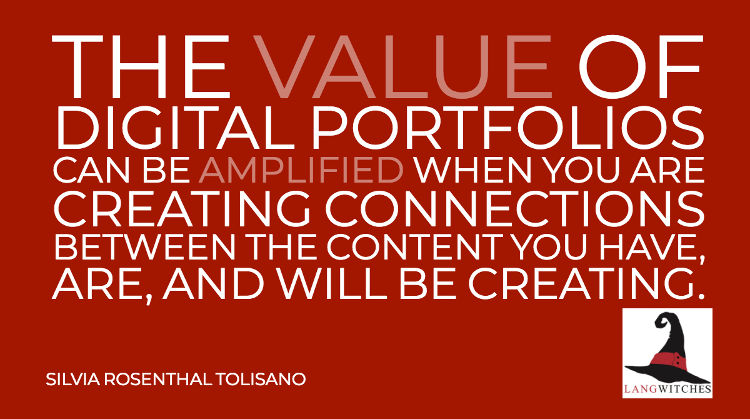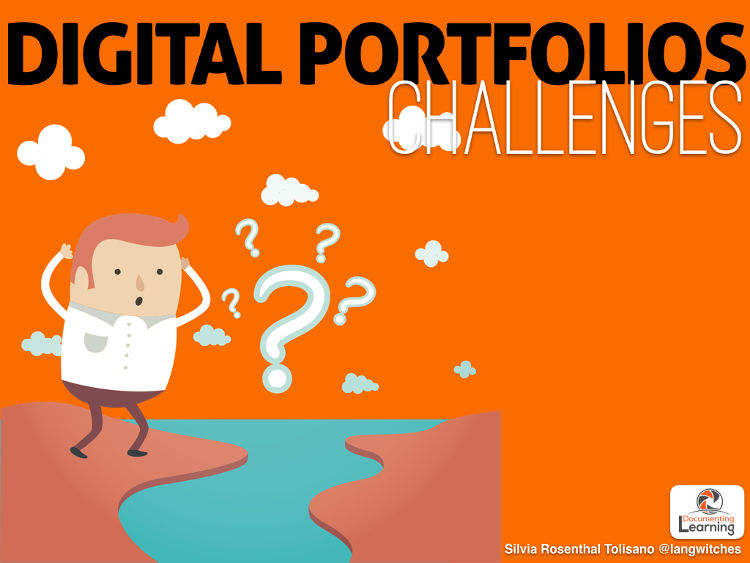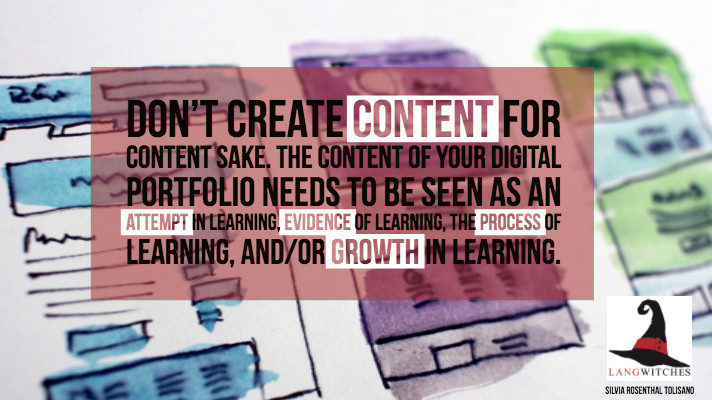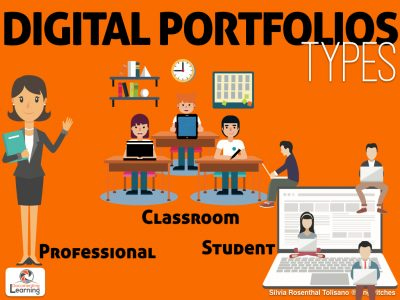Digital Portfolios and Content

Schools, teachers and learners struggle with challenges in many shapes and forms when it comes to digital portfolios.

Digital Portfolio Challenges
When I work with schools, educators, and learners around the world, I discovered that they have many of the same challenges in common. It seems to make no difference if the digital portfolio owner is a student or a professional educator. The challenge is about:
- analog vs. digital writing
- seeing digital portfolio work as additional work to “curriculum work”
- visual communication and ethical use of images
- being open and transparent to an authentic global audience
- seeing branding as something beyond “look at me”.
- recognizing and understanding between display of what happened and evidence of learning through captured artifacts
- how to create a habit of consistently contributing to the digital portfolio
- finding time to create content and use the digital portfolio FOR learning
This blog post focuses on one of these challenges: creating content for digital portfolios. The content created and chosen to include in a digital portfolio can be free flowing or follow a more rigid structure. To me, it depends on what the learner craves and feels more comfortable with. The worst seems to be, when a portfolio owner feels a lack of ownership, is so paralyzed and constrained from a given structure or to the contrary, a lack thereof, that they don’t create and publish anything.
Don’t be too worried about what type of content you are creating in the beginning. In the worst case scenario, the earliest entries in a portfolio can serve as a starting point to begin seeing growth over time when compared to later entries.
With that being said, don’t create content for content sake. The content of your digital portfolio needs to be seen as an attempt in learning, evidence of learning, the process of learning, and/or growth in learning.

Let’s also think about the option of using a different language when we think about digital portfolios. A new language might inspire a different approach to content creation to fulfill the promise of these words. Let’s think of digital portfolios as a combination of a:
- longitudinal learning inventory (Holly Clark)
- curated learning journal (John Spencer)
- learning stories through curation (Anthony Devine)
- global communication hub
- visible thinking journal
- documentation of/for/as learning journey (Silvia Rosenthal Tolisano)
If you crave structure for your digital portfolios (your own professional one or your students), you can use the following categories to guide the creation of your content.
Tools and ideas to transform education. Sign up below.
- Experiment and use different types of media when creating content
- Look at different areas in the learner’s life to create and choose content from
- Be cognizant of the type of portfolio you are aiming for and its characteristics to create related content
- Be aware of the logistics of the portfolio (save, archive, categorize, tag, link) to create content that supports the curation, organization and presentation of the learning story
- Be strategic in keeping the purpose(s) of the portfolio in mind and match these with the content you are creating. The content should be supportive and give evidence that purpose has been/is being fulfilled.
- Use reflection prompts and/or routines as a starting point or support as you create content
- Scout the web, look at blogging challenges for ideas that can inspire you to create content, read other public digital portfolios, look for ideas that allow you to connect to previous artifacts, entries and reflections,
[10 Tips for Embedding Digital Portfolios as Part of Your Classroom Habits]
Types of Digital Portfolios
Traditionally, the content for portfolios would fall under the following categories connected to the types of portfolios:
- showcase– uploading of final artifacts, best work, best achievement, outcome of a project
- process– highlights, as the name says, the process of learning. Upload snapshots of moments in time, the stages of a project, first (second, third, etc.) drafts,
- hybrid– a combination of showcase and process portfolio
When looking at learner’s digital portfolios, I want to add the following types to the mix (without excluding the previous three mentioned or the numerous others that can be found online, such as assessment portfolios, reflective portfolios, developmental portfolios, etc.)

- Classroom Portfolios: collaborative portfolio, content created by teachers and students of a classroom. Entries are tagged/categorized with individual authors.
- (Individual) Student Portfolios: each student maintains their own portfolio, being the sole author of the site.
- Professional Learning Portfolios: Educators seeing themselves as lifelong learners, recognizing the value of documenting for their own learning and the learning of others.
The content for a portfolio can be informed by the purpose of the portfolio.
- documentation of the learning journey: we all know that “learning” can’t necessarily be demonstrated with a one time exam. We gain a better perspective of the learner (and also of ourselves as the learner) when the learner has documented evidence of where he/she has been, what connections they have made, what knowledge and understanding were they able to demonstrate in a variety of ways, and by following along their process. The content is a snapshot of the learner’s thinking, ability and competency at a given moment in time.
- visible thinking: if the learner wants to make their thinking visible, experiment with different strategies that allow the creation of content to be shared with others.
- metacognition: thinking about your thinking is a crucial component in a portfolio to aid in the learner’s thought process and growth. Create content that make that thinking process visible. Show content that make your understanding apparent at different moments in time along the way.
- branding is no longer reserved for big companies. There is educational and academic branding. Who are you as a learner? What is your story? What areas of innovation, research, learning do you contribute to? What do others in your learning network know you to be a quality contributor/curator for?
- if assessment is the purpose or one of the purposes of the portfolio, what are the learning objectives, standards, benchmarks? How can the content that is being created give evidence that these objectives/ standards/benchmarks are being addressed?
- the now literacies & skills are good guidelines for documenting their development and proficiency as the learner is developing content
- when the digital portfolio is used as a global communication hub to document, express and communicate the learner’s thinking and ideas to an authentic global audience, then content creation is also guided with that global audience in mind.
- communication with parents or colleagues can be a powerful content creator guideline. As the portfolio owner thinks about how to best connect and communicate their learning for the intended audience. While parents want to be informed about their student’s learning and progress, colleagues benefit from content created in a profesional learning portfolio that contributes to their own learning in terms of documentation, reflection, resource curation and ideas.
- in-school learning: required school assignments, curriculum content related/ teacher required
- out-of-school learning: extra curriculum, webucation
- passion: What area is the learner passionate about? Could be curriculum related or out-of-school area… Could be an in-school passion based project or an area the learner is passionate about outside of school.
- skills, habit, and literacies: consider creating content that show awareness of, progress in, development of the “now” skills, habits of mind, and literacies
- over time: amplify your area of content to include a time variable.
Being strategically aware of different types of media for your content, make sure that you are not always sticking to the same type. If you are pretty text or image heavy in your content creation, let other media types guide your next content for your portfolio. Stretch yourself outside of your comfort zone when it comes to your content and media types.
- text
- images
- video
- audio
- embedded multi-media content from other tools/platforms
The value of digital portfolios can be amplified when you are creating connections between the content you have, are, and will be creating. These connections should be made visible in your digital portfolio and add another layer of learning and added value to your portfolio.
- connect to your own learning, which you have previously documented and shared in your portfolio.
- use hyperlinked writing to logistically create a breadcrumb trail of the connections you have and are making
- look for connections to other subjects. Learning does not happen from 8:45- 9:36 during Language Arts class alone. It does not represent life outside school campus. How does the learner strategically look for connections to other classes they are taking or have taken? How can the connections the learner makes to other areas/subjects be made visible?
- Not every photo, document, or video can or should be considered evidence of learning. Every artifact included as content in the portfolio should have a connection to learning and in some shape or form show evidence (or lack thereof) of learning.
- create content that make connections to other learners. Learning is social. It is not meant to be kept in isolation. Who are others that contribute to your own learning? What is the breadcrumb trail that led you to new insights, new knowledge, new ideas or have pushed your learning in new directions? Make sure you create content that make these connections and ties visible and part of the content you are creating (with proper credit of course).
- organization: How you are organizing your digital content to be archived, to be able to be found at a later time, to be able to be linked to from and to other content? Being strategic about your organization, can give you a guideline what content to create next or where holes in your content coverage are
- curation: curation of content is different than a collection of content(which unfortunately many digital portfolio content is in the category of artifact collection). The act of curation supports the act of content creation, since the added value curation brings to a collection
- visible thinking routines: Use the already established routines by Project Zero or create your own to guide your content creation according to the routine or a protocol.
- use any of the reflection prompts or routines to inspire and guide your content creation
- create content that make connections to other relevant content or the learner’s personal life visible,
- memes (ex. My life as a reader)
- book reviews, book snaps & recommendations
cross posted at langwitches.org/blog
Silvia Tolisano is a Curriculum21 faculty member, author of the book Digital Storytelling Tools for Educators and founder of the Around the World with 80 Schools project. Read more at langwitches.org/blog
